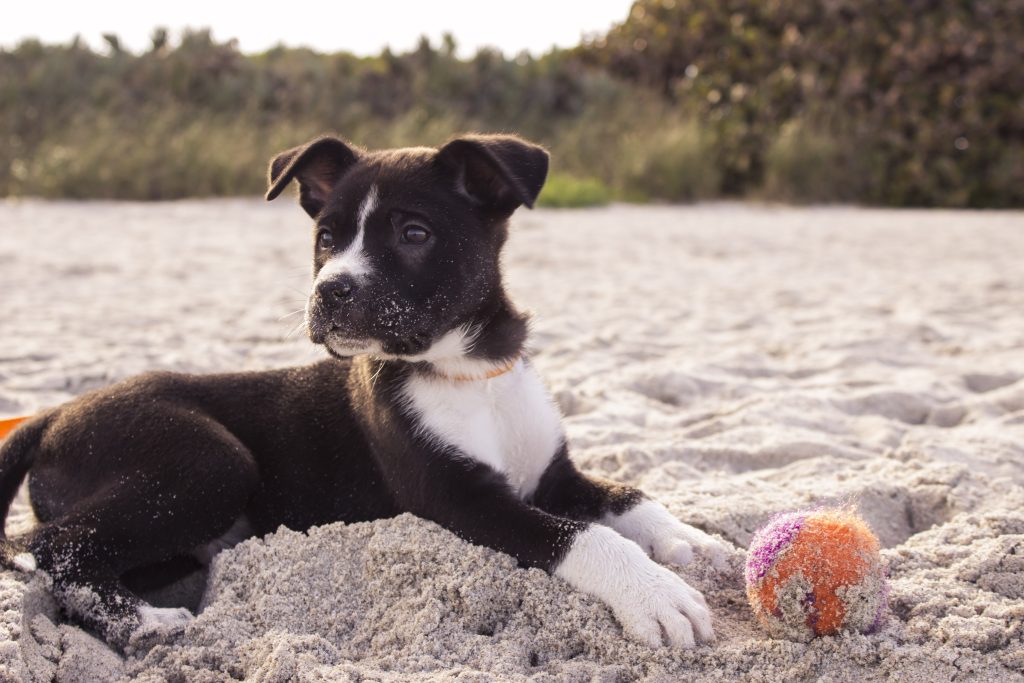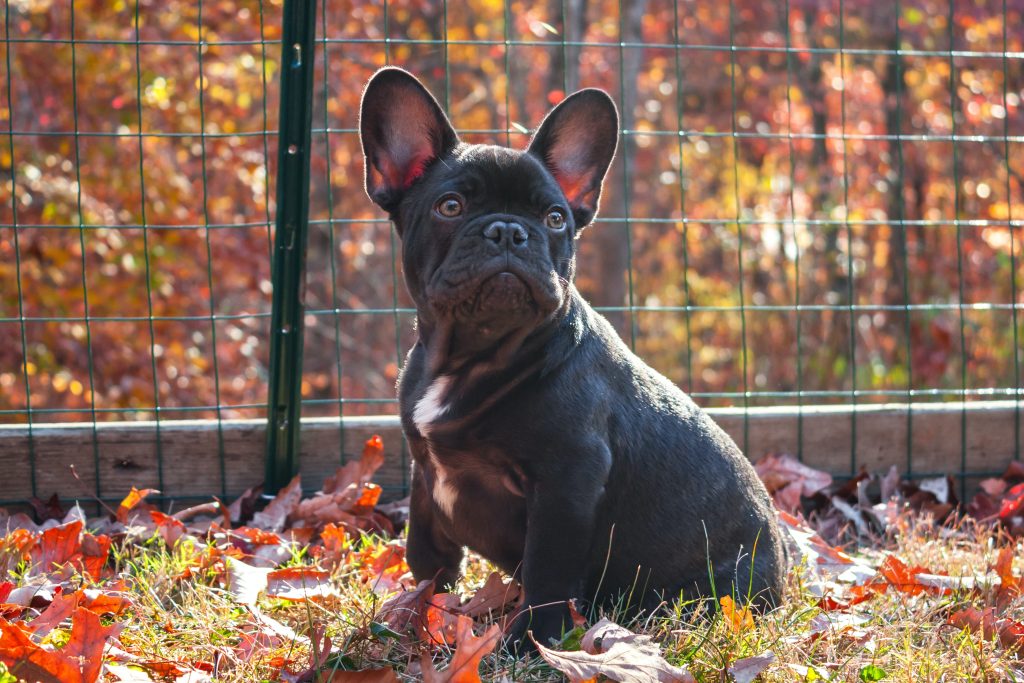If you’ve recently welcomed a new puppy into your home, then surely you’ve experienced the joy of taking them for walks. However, the excitement can quickly turn into frustration if your furry friend constantly pulls on their leash. But fear not, because in this article, we will provide you with simple and effective techniques to train your puppy to walk on a leash without pulling. With a little patience and consistency, you’ll soon be enjoying peaceful strolls together, creating lasting memories with your well-behaved companion. So, let’s get started on this leash training journey and make walks with your puppy an enjoyable experience for both of you!
Using Positive Reinforcement
Choose the Right Equipment
When it comes to training your puppy to walk on a leash without pulling, it’s important to choose the right equipment. A well-fitted harness is often recommended over a collar, as it provides better control and reduces the risk of injury to your puppy’s neck. Look for a harness that has a front clip attachment, which helps discourage pulling by redirecting your puppy’s attention towards you when they pull.
Introduce the Leash
Before you start walking your puppy on a leash, it’s important to introduce them to the leash and help them get comfortable with it. Begin by letting your puppy sniff and explore the leash, allowing them to become familiar with its presence. Let them wear the leash indoors for short periods of time, gradually increasing the duration as they become more comfortable. This process helps prevent your puppy from associating the leash with any negative experiences.
Reward Good Behavior
Positive reinforcement is a highly effective training method when it comes to teaching your puppy to walk on a leash without pulling. Whenever your puppy exhibits good behavior, such as walking calmly by your side or not pulling on the leash, reward them with praise, treats, or a combination of both. This positive reinforcement helps reinforce the desired behavior and encourages your puppy to continue behaving in that manner.
Start Indoors
Before venturing outside, it’s beneficial to start leash training indoors. Choose a quiet and familiar area within your home where there are fewer distractions. This controlled environment allows you to focus on teaching your puppy the basics of walking on a leash without the added challenges of outdoor stimuli. Start by walking a few steps with your puppy, rewarding them for staying close to your side and maintaining a loose leash.
Practice in a Low Distraction Environment
As your puppy becomes more comfortable with walking on a leash indoors, gradually transition to practicing in a low distraction environment. This might be your backyard or a quiet park with minimal foot traffic. By gradually increasing the distractions, you are helping your puppy build their focus and self-control. Remember to consistently reward and praise your puppy for walking calmly on a loose leash, reinforcing the desired behavior.
Teaching Loose Leash Walking
Start with Short Sessions
When teaching your puppy to walk on a leash without pulling, it’s important to start with short training sessions. Puppies have short attention spans, so keeping the sessions brief (around 5-10 minutes) prevents them from becoming overwhelmed or bored. Focus on quality over quantity, ensuring that your puppy is engaged and attentive during each session. Over time, you can gradually increase the length of the training sessions as your puppy becomes more accustomed to walking on a leash.
Use Treats as Lures
Using treats as lures is an effective way to encourage your puppy to walk on a loose leash. Hold a treat in your hand and use it to guide your puppy along by your side. As your puppy walks with you, reward them with the treat and praise. This positive reinforcement strengthens the association between loose leash walking and positive outcomes. Slowly reduce the frequency of treat rewards over time, transitioning to intermittent reinforcement as your puppy becomes more proficient.
Reward for Loose Leash Walking
Consistently rewarding your puppy for walking on a loose leash is crucial for reinforcing the desired behavior. Whenever your puppy maintains a loose leash, praise them and offer a treat or verbal marker to let them know they are doing a great job. Be sure to reward your puppy promptly when they exhibit the desired behavior, as this helps them make the connection between the behavior and the reward.
Address Pulling
If your puppy starts pulling on the leash, it’s important to address this behavior promptly. Stop walking and stand still, not giving in to the pulling. Wait for your puppy to relax the tension on the leash, and then resume walking. By repeating this process consistently, your puppy will begin to understand that pulling on the leash does not lead to forward progress. Reinforce the behavior you desire by rewarding your puppy when they walk calmly by your side.
Teach ‘Leave It’
Teaching your puppy the ‘leave it’ command is invaluable when it comes to leash training. This command allows you to redirect your puppy’s attention away from distractions, such as squirrels or other dogs. Begin by holding a treat in your hand and saying “leave it.” When your puppy stops trying to get the treat, reward them with a different treat and lots of praise. Practice this command both indoors and outdoors, gradually increasing the level of distractions.
Use a Clicker or Verbal Marker
Clickers or verbal markers are useful tools in reinforcing good behavior during leash training. A clicker is a small device that makes a distinct sound when pressed, while a verbal marker can be a specific word like “yes!” or “good.” Clickers or verbal markers are used to mark the desired behavior at the exact moment it occurs, signaling to your puppy that a reward is coming. Pair the clicker or verbal marker with treats or praise to strengthen the positive association.

This image is property of images.unsplash.com.
Building a Strong Foundation
Focus on Engagement and Attention
Building a strong foundation for leash walking begins with fostering engagement and attention between you and your puppy. Establishing a strong bond and a relationship built on trust is crucial for successful leash training. Incorporate interactive playtime, training sessions, and positive interactions into your daily routine to strengthen the bond between you and your puppy. When your puppy is engaged and attentive to you, they are more likely to follow your guidance during leash walks.
Work on Basic Obedience Commands
Your puppy should have a solid foundation in basic obedience commands before you begin leash training. Commands like sit, stay, and come are not only important for safety reasons but also help establish your leadership and control during walks. Practice these commands regularly in a controlled environment and reinforce them during your leash training sessions. The more your puppy understands and responds to these commands, the easier it will be to maintain their focus and control during walks.
Establish Pack Leadership
Dogs are pack animals, and they naturally look for a leader to guide and provide them with direction. Establishing yourself as the pack leader during leash training helps your puppy understand their role as a follower. This can be done through consistent training, clear communication, and enforcing boundaries. When your puppy recognizes you as their leader, they will be more inclined to listen and follow your instructions during leash walks.
Consistency is Key
Consistency is a crucial aspect of leash training. Consistently reinforce and reward the desired behaviors, while consistently discouraging and redirecting unwanted behaviors such as pulling. Use the same verbal cues, gestures, and rewards throughout the training process to ensure clarity for your puppy. Consistency helps your puppy learn what is expected of them and reinforces the message that walking calmly on a loose leash is the desired behavior.
Gradually Increase Distractions
As your puppy becomes more proficient in walking on a leash without pulling in low distraction environments, it’s important to gradually increase the level of distractions. Expose your puppy to different sights, sounds, and smells, gradually increasing the complexity of the environment. This helps your puppy learn to focus and stay calm amidst distractions. Remember to reward and reinforce the desired behavior, gradually phasing out treat rewards as your puppy becomes more reliable.
Vary Routes and Environments
To ensure that your puppy is well-prepared for leash walking in various situations, it’s important to vary your routes and environments. This exposes your puppy to different terrains, surfaces, and distractions, helping them generalize their leash training skills. Walk your puppy in different neighborhoods, parks, or even busier areas as they become more proficient. The more exposure your puppy has to different environments, the more confident and adaptable they will become in their walking skills.
Managing Distractions
Recognize Trigger Points
Understanding what triggers your puppy’s unwanted behaviors, such as pulling or lunging on the leash, is essential for effectively managing distractions. Take note of what specific sights, sounds, or smells cause your puppy to become overly excited or reactive. By recognizing these trigger points, you can anticipate them during walks and implement strategies to redirect your puppy’s attention and keep them focused on you.
Use Desensitization Techniques
If your puppy becomes overly reactive or fearful in the presence of certain distractions, desensitization techniques can be helpful. Start by exposing your puppy to the trigger at a distance where they feel comfortable and not reactive. Gradually decrease the distance over multiple training sessions, ensuring that your puppy remains calm and relaxed. Pair the trigger with positive reinforcement, such as treats or praise, to associate it with positive experiences. This gradual exposure and positive reinforcement help your puppy overcome their fear or reactivity.
Practice ‘Watch Me’ Command
Teaching your puppy the ‘watch me’ command is an effective way to redirect their attention back to you during walks. Start by holding a treat near your face and say “watch me.” When your puppy makes eye contact with you, reward them with the treat and praise. Practice this command in low distraction environments initially, gradually increasing the level of distractions. The ‘watch me’ command helps your puppy focus on you, reinforcing your position as the leader and reducing the impact of distractions.
Provide Mental and Physical Stimulation
Managing distractions during leash walks is easier when your puppy is mentally and physically stimulated. Ensure that your puppy receives plenty of exercise before walks to help burn off excess energy and reduce the likelihood of them becoming hyperactive or easily distracted. Engage your puppy in interactive games, puzzle toys, and training sessions to keep their mind active and focused. A tired and mentally stimulated puppy is more likely to be calm and attentive during leash walks.
Avoid Punishment-based Techniques
When managing distractions during leash walks, it’s important to avoid punishment-based techniques. Punishing your puppy for unwanted behavior, such as pulling or lunging, can create fear, confusion, and aggression. Instead, focus on redirection, positive reinforcement, and training techniques that reward good behavior. Remain patient and consistent, and seek professional help if you’re having difficulty managing distractions with positive reinforcement methods alone.

This image is property of images.unsplash.com.
Troubleshooting Common Issues
Excessive Pulling
Excessive pulling is a common issue when leash training a puppy. If your puppy consistently pulls on the leash, it’s important to address this behavior promptly. Use the stop and stand still technique mentioned earlier, and ensure that your puppy is rewarded for walking calmly on a loose leash. Consider using a front-clip harness to discourage pulling and redirect your puppy’s attention towards you whenever they start to pull.
Leash Reactivity
Leash reactivity refers to a puppy’s overly reactive or aggressive behavior towards other dogs or people while on a leash. If your puppy exhibits leash reactivity, it’s important to seek professional help from a qualified dog trainer or behaviorist. They can assess the situation and provide you with specific techniques to address your puppy’s reactivity in a safe and controlled manner.
Fear or Anxiety
Some puppies may exhibit fear or anxiety while on a leash, especially in unfamiliar environments or situations. If your puppy displays fearful behaviors, such as trembling, cowering, or trying to escape, it’s crucial to address their anxiety. Gradual desensitization, positive reinforcement, and counter-conditioning techniques can be effective in helping your puppy overcome their fears and develop confidence during leash walks. If the fear or anxiety persists, consult a professional trainer or behaviorist for guidance.
Excessive Mouthing
It’s not uncommon for puppies to mouth or bite the leash during walks, especially when they are teething. Excessive mouthing can be addressed through redirection and positive reinforcement techniques. Whenever your puppy starts mouthing the leash, offer them a suitable chew toy or treat as an alternative. Praise and reward your puppy for redirecting their mouthing behavior onto the appropriate item, reinforcing the desired behavior.
Lack of Focus
If your puppy struggles to maintain focus during walks, it’s important to assess the level of distraction in the environment. Start with low distraction environments and gradually increase the complexity as your puppy becomes more proficient. Ensure that your training sessions are short and engaging, making it easier for your puppy to stay focused. Building a strong foundation of engagement and attention through interactive play and training sessions can also help improve your puppy’s focus during leash walks.
Additional Tips and Tricks
Use a Properly Fitted Harness
Choosing a properly fitted harness is essential for comfortable and safe leash walking. Look for a harness that fits securely but allows your puppy to move freely. Avoid harnesses that are too tight or restrictive, as they can cause discomfort or limit your puppy’s natural movement. Regularly check and adjust the fit of the harness as your puppy grows.
Avoid Retractable Leashes
Retractable leashes are not recommended for leash training purposes, especially for puppies. These leashes can encourage pulling, as they provide your puppy with the freedom to continuously extend the leash. Additionally, retractable leashes are harder to control and can be dangerous in high traffic areas or if your puppy lunges suddenly. Stick to a standard fixed-length leash for walking and training purposes.
Be Patient and Persistent
Leash training takes time, patience, and consistency. Remember that every puppy learns at their own pace, and progress may be gradual. Stay positive, remain patient, and be consistent in your training efforts. Celebrate small victories and continue to reinforce the desired behaviors. With time and persistence, your puppy will become a leash walking pro.
Seek Professional Help if Needed
If you’re facing difficulties in leash training your puppy or if your puppy displays persistent behavior issues, don’t hesitate to seek professional help. A qualified dog trainer or behaviorist can provide personalized guidance and techniques tailored to your specific situation. They can help you address any challenges and ensure that your puppy receives the proper training and guidance they need.
Maintain a Positive Attitude
Lastly, maintain a positive attitude throughout the leash training process. Your mindset and energy can greatly impact your puppy’s experience. Stay upbeat, patient, and encouraging. Positive reinforcement and a positive mindset go hand in hand, providing your puppy with the best environment for learning and success. Enjoy the journey of leash training with your puppy, and celebrate each milestone along the way.
Remember, training your puppy to walk on a leash without pulling takes time and dedication. By following these techniques, being consistent, and providing positive reinforcement, you are setting your puppy up for success. Enjoy the process, celebrate their accomplishments, and watch as your puppy becomes a well-behaved and confident walking companion.

This image is property of images.unsplash.com.